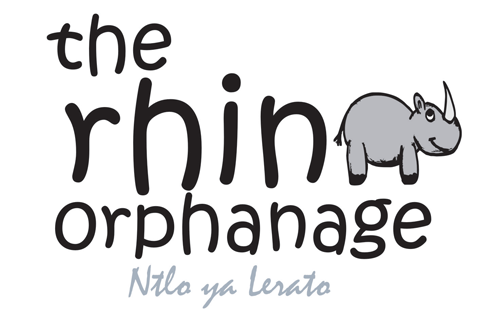
our rhino rescue centre
Our rescue centre for rhinos is based in the Limpopo Province of South Africa.
Every rhino orphan and the circumstances under which they’re rescued differs. All of the orphaned rhinos that we rescue have experienced emotional and mental trauma, and many have also suffered physical trauma and have been deliberately injured by poachers.
Each rhino orphan requires a unique approach, and trust-building takes place at a pace that is attuned to the individual baby rhino.
Wildlife rescue in South Africa is absolutely essential for preventing the extinction of endangered species – especially our treasured rhinos.
It is our life’s work and greatest honour to be of service to the magnificent baby rhinos in our care.
how it works
1.
RESCUE
We receive a phone call that a baby rhino is in need.
As soon as the person on duty receives the phone call that there is a baby rhino in need, our team prepares for the rescue mission. The call-to-help is generally pre-empted by the killing of a mother rhino, and often the baby rhino needs to be located as it may have fled the scene of the poaching. The rescue team may be on standby for a couple of days until the rhino calf is found.
While rhino calves younger than around 5 months won’t leave their slain mothers, older rhino calves tend to flee the site of danger and trauma. Younger calves are therefore normally easier to locate, sedate, and capture, but sadly have often been injured by the poachers. The period of stabilisation tends to be shorter if the baby rhino hasn’t been on the run for too long and hasn’t suffered physical injuries. Those that have been on their own for a few days tend to be dehydrated and stressed. And, if they’re wounded, there’s a stronger chance of infection and vulnerability to predators.
Once the team has found the baby rhino and determined the approximate age, appropriate transport and collection is arranged. Rhino 911 helicopters help facilitate the speedy locating and recovery of the calves.
Prior to transport, the rhino calf will be sedated by a vet, given ear plugs and carefully blindfolded to help reduce stress from overstimulation. The rhino orphans often require an IV line as well.
Depending on the size of the rhino, it will either be loaded into the back of a vehicle or on a trailer. Our carers stay with the baby rhino for the whole journey, never leaving their side.

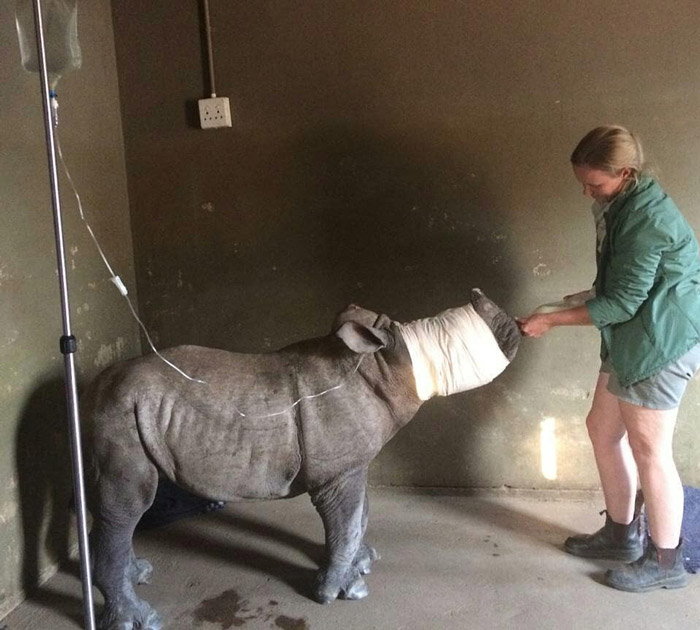
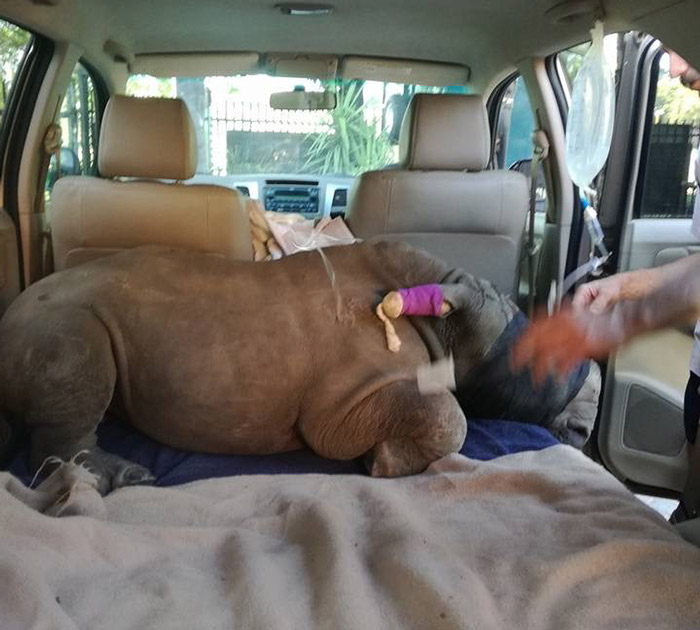
The journey to the orphanage can take anywhere from 2-4 hours or longer depending on circumstances such as weather, traffic, and the condition of the rhino calf.
On arrival at The Rhino Orphanage, the rhino calf will be placed in an overnight room for at least 2-3 days and will have 2-3 carers attending to it around the clock. No two rhinos are the same, and some tend to remain drowsier than others as the sedative wears off. The rhino’s state of restlessness is also influenced by factors such as whether they’ve been physically wounded, and how much adrenaline still remains in their system.
Once the rhino calf is fully conscious, it will remain blindfolded while a bottle is introduced. Fortunately, rhino babies are food motivated, which means the likelihood of them accepting sustenance is strong. However, should the rhino orphan have suffered trauma at the hands of a human, it may take them up to 14 days (or longer) before they are willing to accept human interaction. Baby rhinos often refuse to drink from artificial teats and bottles as some don’t like the sensation, texture and smell of it. Those calves may drink from a bowl, but this is only done as a last resort. Because older calves of 5-7 months old have already established strong bonds with their mothers, they may also be more reluctant to accept a human “mom”.
While younger rhino calves tend to be more accepting of affection, interaction and nourishment from humans, they still need to be monitored closely so that the carers can discern whether or not there are physical manifestations of stress such as gastric ulcers. And while they may no longer need their blindfold to reduce overwhelming stimuli, they still require hands-on care and physical comfort.
Blindfolds are left on the rhinos no longer than 36 hours to prevent eye damage, stress, and depression in the calf. Therefore, if a baby rhino won’t accept a bottle or their human carers after this 36 hour period, the carers will need to win its trust from outside the holding room, for safety reasons.
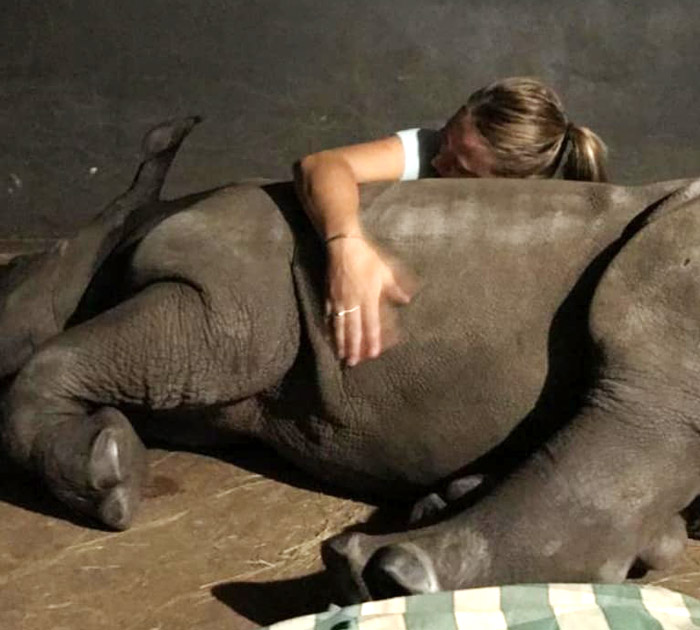

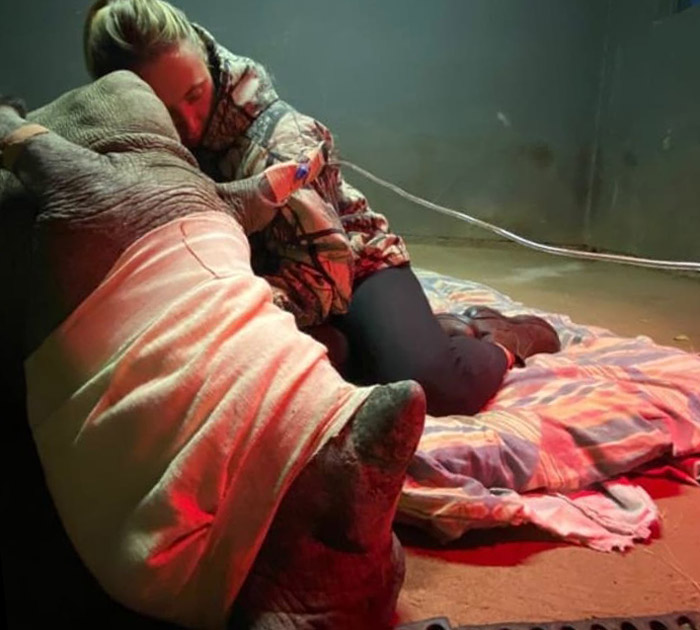
Depending on the emotional state of the rhino calf, the blindfold is removed while they’re being bottle fed. This way, they learn to associate the scent of humans with food, nourishment and feelings of safety and satiation. Over time, the baby rhinos will also associate being bottle fed with touch and affection.
Baby rhinos are extremely affectionate – they like being stroked on the side of their necks and faces. In the wild, they will almost always be touching their mothers. Because they don’t like being alone, a carer will be with their allocated rhino orphan 24/7.
Occasionally, the rhinos may initially get aggressive in the company of carers out of fear of being confined, or fear of human interaction. Should that happen, the carers will leave the room until the baby rhino has calmed down. Slowly, the carer will begin the process of trust-building by gently introducing touch and milk.
After a period of time, the rhinos memories and associations are reshaped from feelings of fear, to those of comfort. The more they associate humans with good feelings of being physically and emotionally restored, the more trustful and relaxed they become, and interactions with carers become more positive.
2.
RAISE
The baby rhinos slowly adapt to their new home and are given the highest level of care.
After a couple of days being kept safe within a room, the baby rhino is given access to an outside area. While some baby rhinos are filled with terror when confined, others mind it less. They also sometimes don’t like to relieve themselves on the unfamiliar substrate of the enclosure. Should the carers notice the rhino calf pacing and looking restless, they will give them access to the outside area and the familiar, natural substrate where they feel more comfortable to relieve themselves. Once they’re stable and settled within the smaller area, they’re ready to graduate to a bigger boma (open-air enclosure).
While baby rhinos don’t like being alone, they may not initially like being around other rhinos. Rhino dynamics aren’t unlike human dynamics – sometimes they get along immediately, while other times they may never see eye-to-eye. When a very young rhino comes to the orphanage, they’re typically not capable of defending themselves against bigger rhinos. However, they still require company. In these cases, another animal such as a goat or lamb may be introduced to keep the rhino baby company. The anti-poaching dogs often serve as comfort-companions to the baby rhinos. The rhino orphans generally accept the other animal with ease.
When rhinos are of similar size, age and temperament, they’re introduced to each other. This socialisation is vital and will ultimately reduce the likelihood of them imprinting on humans, thereby ultimately lessening their dependence on us.
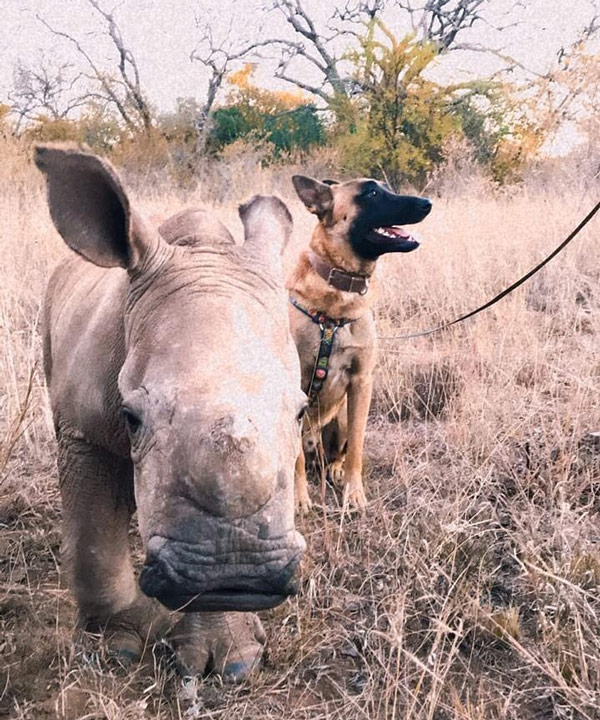
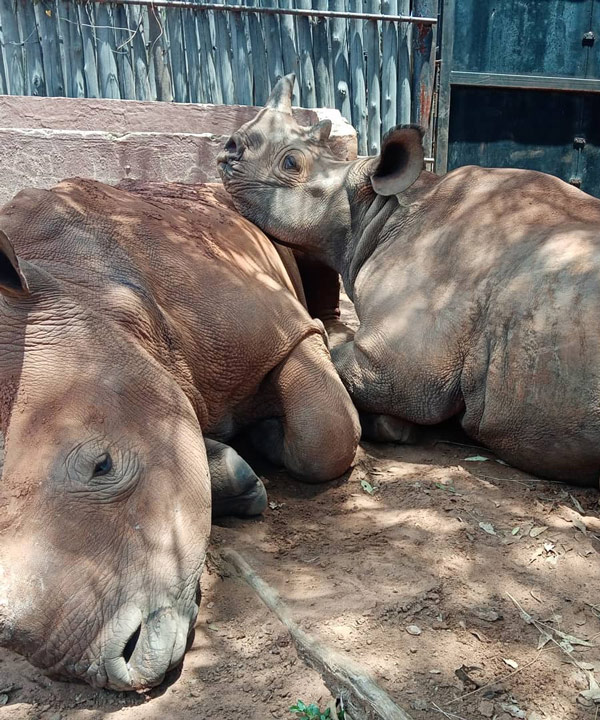
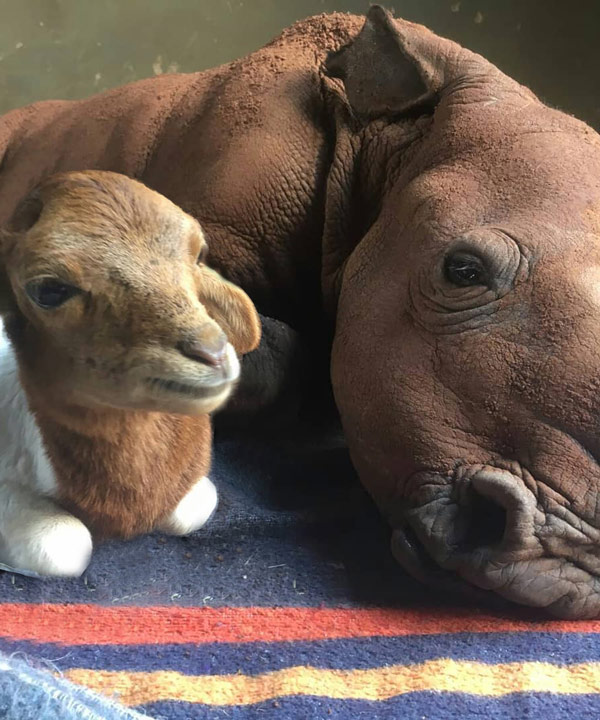
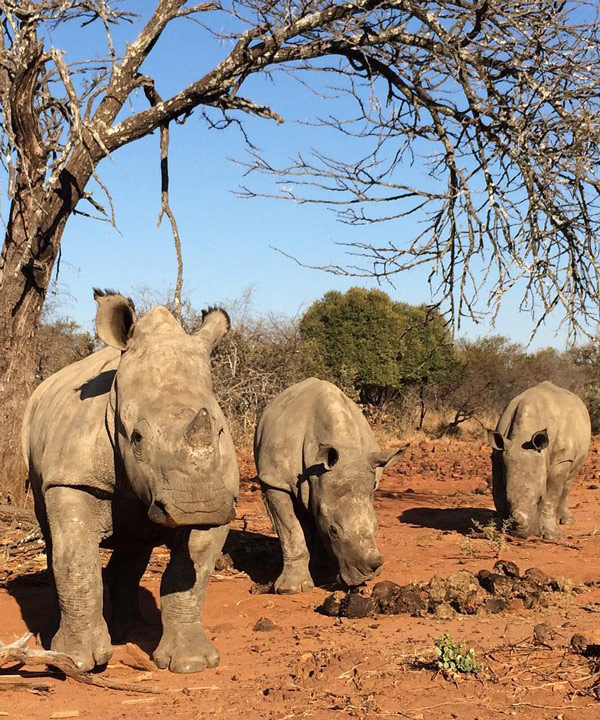
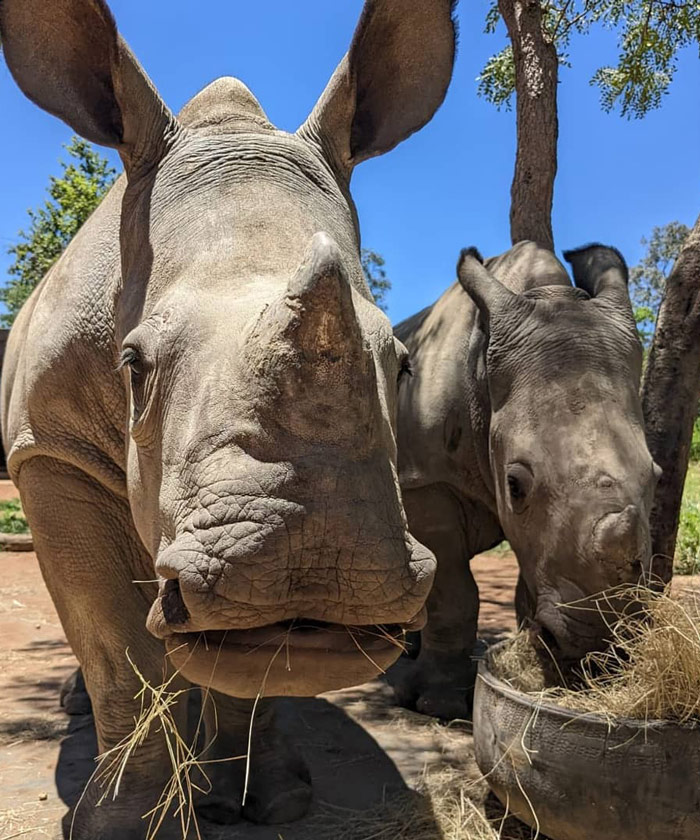

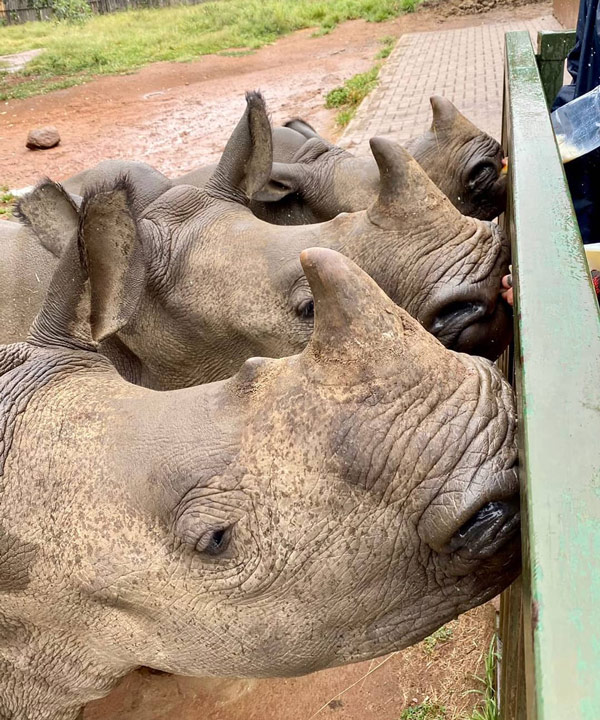

Exercise is also very important for the baby rhinos development. The rhino calves will be taken out of the enclosures for walks, and are encouraged to browse and graze over a bigger area during the rehabilitation phase.
While natural behaviour such as grazing and wallowing is instinctive, they sometimes need a little coaxing and demonstration. Carers may rub them with mud – which is good for the condition of their skin, helps regulate their body temperature, and prevents ticks and other biting insects. Through observing other rhinos and with encouragement from their carer, the baby rhinos soon learn that it feels wonderful to wallow on a hot day.
While their diets are closely monitored, baby rhinos tend to instinctively avoid eating poisonous plants. Black rhinos, however, are able to tolerate plant poisons. Orphaned rhinos are milk fed till around 18-24 months, but solids are introduced from around 2-3 months of age. Should the rhinos be observed eating sand, it’s taken as an indication of stress. They are then closely monitored and are prevented from ingesting any more sand.
Although the reason for eating sand hasn’t been 100% established, it’s generally associated with stress – such as a change in environment or change of carer. This behaviour has been displayed when a rhino’s human “mom” leaves the orphanage, or when the calves are moved to another boma (open-air enclosure). Eating sand is dangerous for rhino calves and can be potentially fatal.
3.
REHABILITATION
REHAB
Fostering confidence and building trust is a vital part of the process.
Once the baby rhinos have been completely weaned, the carers will initiate breaking contact with them. While this means no more cuddling with humans, the rhinos will have learned to seek affection with fellow rhinos by this stage. These baby rhinos will browse and graze and also receive supplement feeds by way of pellets and grass. The period of adjustment to “life with other rhinos” depends on how long they’ve been with their carer.
During the rehabilitation phase, they will have had regular play-dates with other rhinos, which gives them the opportunity to bond with their own species. After around 10 days or so, the bonds between rhinos will have been forged, and carers will notice them touching each other as they lie down or sleep.
Touch and intimacy is vital for baby rhinos because in the wild, they naturally experience this with their mothers. However, this intimacy isn’t carried through into adulthood.
The process of fostering confidence and building trust is not dissimilar to humans. It takes some rhinos longer to trust and heal fully than others. Their individual backstory plays a significant role and informs their temperament and disposition. Rhinos who have experienced trauma may fright more easily and may be more vigilant. Their anxious state can often elicit anxiety in other rhinos. In addition, every rhino experiences trauma in an idiosyncratic way. Ultimately, each baby rhino’s temperament is different. Some tend to be more extrovert, bold and make “friends” with other rhinos easily, while others are shy, more introverted, and take longer to form those bonds.

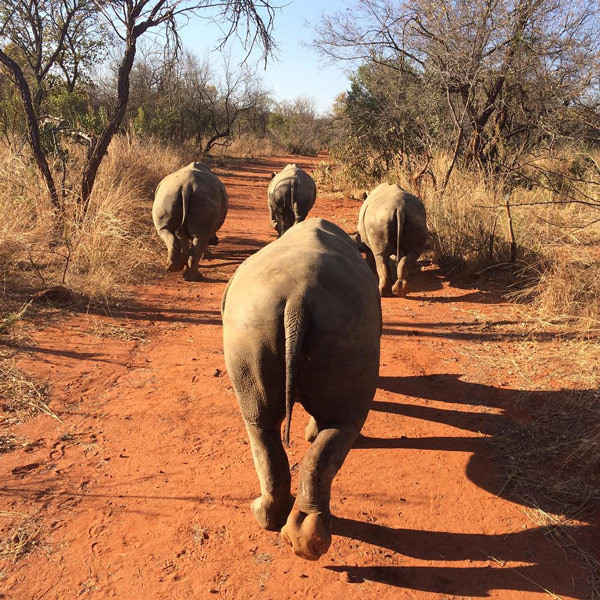
4.
RELEASE
The rewilding of the rhino is an immensely proud yet understandably bittersweet moment.
By all accounts, indications that a rhino is ready for release is a bitter-sweet moment. While independence and self-sufficiency in the wild is the natural order of things, it’s inevitably sad for the carers and staff at The Rhino Orphanage to part with the rhinos when they’re returned to their respective nature reserves.
Generally, rhino are ready for release at around 4-5 years of age. At this stage, they’re strong enough to defend themselves against predators as well as other rhinos. It’s with great relief that rhinos have been observed confronting predators on being released, and have escaped unharmed.
In 2019, two of the hand-reared rhinos that had been with the orphanage since they were 6 weeks old, intuitively knew how to handle a pride of 8 lions. Instinctively they knew how to create a star formation, their horns facing outwards as they backed way. This indicated a job well-done on our behalf, and the rhinos gained a valuable life-lesson in self-preservation.
Once a rhino has been returned to where it belongs, the nature reserve will continue to monitor, protect and track the rhinos. We know and trust that each individual Game Reserve will do all that’s within their power to keep the baby rhinos that we’ve rescued, raised and rehabilitated safe and in good health.
Wildlife rescue in South Africa is absolutely essential for preventing the extinction of endangered species – especially our treasured rhinos. It is our life’s work and greatest honour to be of service to the magnificent baby rhinos in our care.


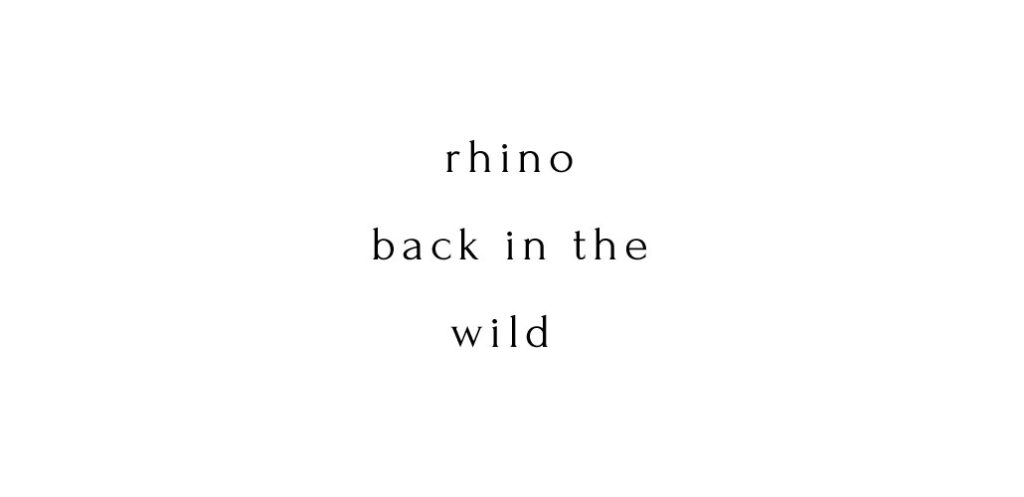
The story of rescued rhino Montle
Lorem ipsum dolor sit amet, consectetur adipiscing elit. Nam non magna tempus, convallis turpis a, venenatis eros. Nullam ut magna velit. Ut at vehicula elit, a bibendum mauris. Mauris volutpat facilisis volutpat. Aliquam quis orci molestie, gravida arcu non, posuere magna. Nam eu felis sit amet neque consequat porta ut ac neque. Aliquam sagittis purus ac massa tincidunt semper in pellentesque enim. Vestibulum varius, nulla eu faucibus faucibus, nibh lectus auctor justo, eget egestas urna lectus eu mi. Etiam non nunc accumsan, fringilla tortor ut, bibendum elit. Vivamus lobortis lacinia vulputate. Nam lobortis justo blandit neque molestie volutpat.
Suspendisse lobortis posuere purus, ac bibendum orci posuere sit amet. In hac habitasse platea dictumst. Vivamus vel bibendum velit. Integer at lacus ex. Donec vestibulum turpis sed eros scelerisque, id porttitor purus imperdiet. Phasellus sit amet tortor vitae metus varius molestie vitae quis diam. Duis sed quam tempor, accumsan urna sed, maximus nisi. In varius commodo tellus, vel pellentesque nibh.
